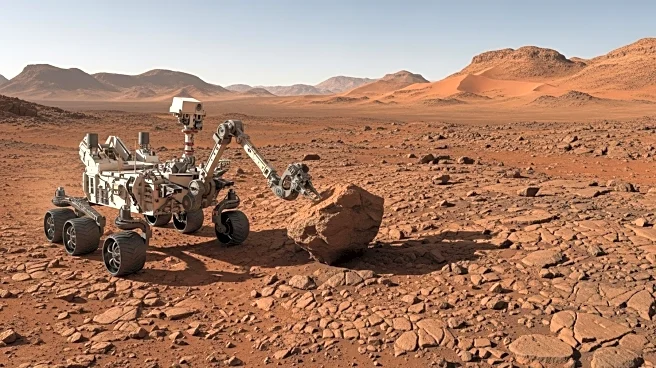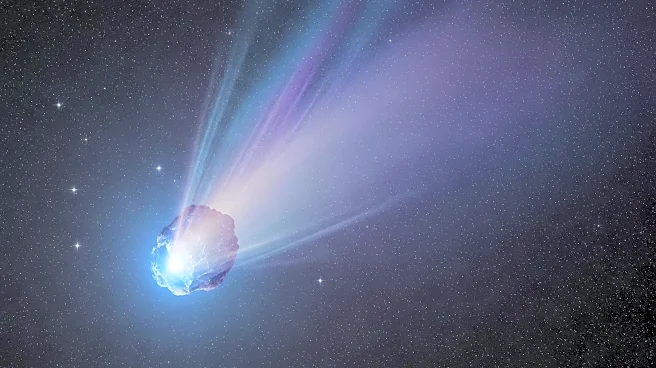What's Happening?
NASA's Perseverance rover has discovered intriguing mineral formations in the Jezero Crater on Mars, which may indicate past life. The rover found an arrowhead-shaped rock, nicknamed Cheyava Falls, with markings rich in organic carbon, iron, phosphorus, and sulfur. Scientists have identified minerals such as vivianite and greigite, which typically form through redox reactions, processes that underpin life on Earth. These findings suggest the possibility of biological activity, although they could also arise from non-living processes. The discovery marks a departure from the usual chemistry observed on Mars, offering new insights into the planet's past environments.
Why It's Important?
The discovery by Perseverance provides a potential breakthrough in the search for life on Mars. The presence of minerals formed through redox reactions raises the possibility that similar processes could have supported life on the planet. This finding could reshape scientific understanding of Mars' history and its capacity to support life. The study of these minerals may reveal prebiotic chemistry, offering clues about the conditions that could have fostered life. The discovery also highlights the importance of continued exploration and research on Mars, as scientists seek to uncover the planet's secrets and assess its habitability.
What's Next?
Perseverance has drilled a core from Cheyava Falls and cached it for eventual return to Earth. Scientists are eager to analyze the sample in ways impossible aboard the rover, focusing on isotopic measurements to determine whether biology was involved in the redox reactions. The Mars Sample Return mission, if successful, will provide pristine samples for detailed study, potentially confirming the presence of life on Mars. The ongoing research will contribute to the broader understanding of Mars' history and its potential to support life, guiding future exploration efforts.
Beyond the Headlines
The discovery underscores the importance of international collaboration in space exploration, as scientists from around the world work together to unravel Mars' mysteries. The findings also highlight the need for effective communication strategies to counter misinformation and ensure public understanding of scientific phenomena. The study of Mars' mineral formations may offer insights into the planet's climate and atmosphere, revealing shifts that could have supported habitable environments.










